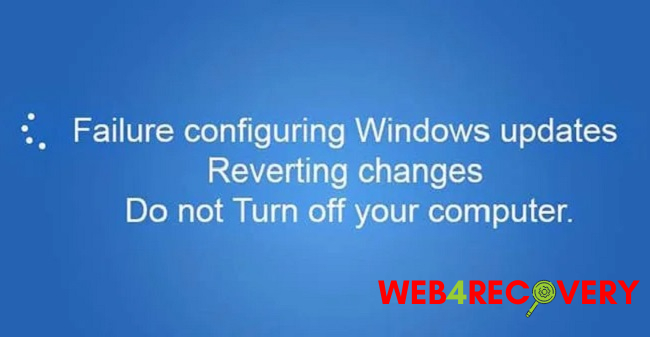Experiencing a failure to configure updates on your Windows machine can be frustrating. This is an issue that many Windows users encounter, specifically those using Windows 8.
If your system repeatedly attempts and fails to install updates, resulting in a message that says “Failure configuring Windows updates.
Reverting changes,” this comprehensive guide can help. We’ll provide an understanding of why this happens and deliver practical steps on how to resolve this common Windows update issue.

What Causes Failure to Configure Updates?
Before delving into solutions, it’s crucial to understand why Windows might fail to configure updates.
This problem usually occurs when the Windows update process is interrupted, or when there’s an issue with the system files that support the update process.
An unstable internet connection during the download of updates can also cause this problem.
Practical Solutions to Resolve Windows Update Failure
1. Restart Your Computer:
Often, a simple restart can resolve this issue. It allows your computer to reset the state of all programs and system services, potentially fixing any minor glitches that may have caused the update failure.
2. Perform a Clean Boot:
A clean boot can help pinpoint the root of the problem. It involves starting Windows with a minimal set of drivers and startup programs, so you can determine whether a background program is interfering with your update.
3. Troubleshoot Windows Update:
Windows 8 comes with an in-built Windows Update Troubleshooter. This tool can automatically repair issues that block the installation of Windows updates. You can access it through the Control Panel under the ‘Troubleshooting’ section.
4. Delete Temporary Update Files:
Windows stores temporary update files in a folder called “SoftwareDistribution.” If any of these files are corrupt, they can cause issues with updates. Deleting these files can often resolve the problem.
To do this:
- Press Windows Key + R, type
services.mscand hit Enter. - In the Services window, look for the Windows Update service, right-click and select ‘Stop.’
- Navigate to C:\Windows\SoftwareDistribution and delete all the files and folders inside.
- Return to the Services window, right-click on Windows Update service and select ‘Start.’
5. Update System Drivers:
Outdated system drivers might conflict with Windows updates. Consider updating all your drivers, which you can do manually via the Device Manager, or you can use a third-party tool that automates the process.
6. Perform a System Restore:
If all else fails, you can use a system restore point. This feature takes your PC back to a point in time when everything worked fine. Remember, it’s a good practice to create restore points before each update.
In conclusion
A failure to configure updates in Windows 8 can often be resolved through a series of practical steps.
It might be a simple case of restarting your computer or a slightly more involved process of troubleshooting Windows update or updating system drivers. Always remember to back up your data and create restore points before attempting any major changes to your system.

















